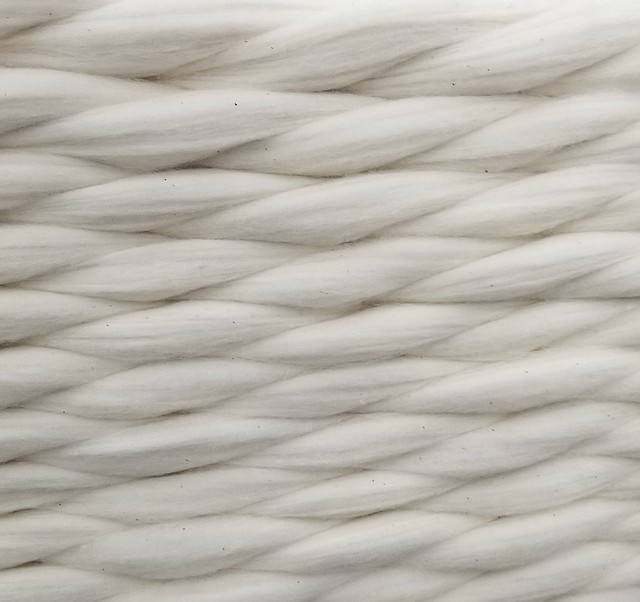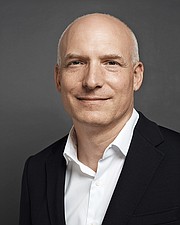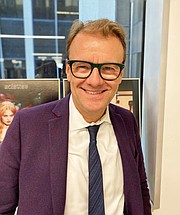Industry Focus: Fiber, Yarn and Fabric—What features in fiber and yarn are your clients demanding, and how is this trend shaping the future of your business?
Textiles
As of Tuesday, October 5, 2021
Within the foundation of every garment constructed, at the core of each piece of clothing that is made, is the cornerstone of fashion that lays the groundwork for apparel from fiber, yarn and fabric. While consumers of the past were simply satisfied with the composition listed on the tags of their clothing, today’s customers want more.
A demand for transparency along the supply chain has increased due to the desires of customers to decrease their negative impact and increase their responsibility for people and the planet. As consumers drive the move toward more-sustainable practices, producers of fiber, yarn and fabric are meeting this need to ensure brands and designers are able to tell their side of a responsible story. California Apparel News asked experts in this category: What features in fiber, yarn and fabric are your clients demanding, and how is this trend shaping the future of your business?
Daren Abney
Senior Business Development Manager
Lenzing Fibers, Inc.
Clients across the supply chain are looking for more-tangible ways to incorporate sustainability into their products, including fiber. Customers want the ability to credibly tell a story around a wide variation of sustainability topics. From water savings to carbon neutrality, the key capability is being able to weave elements of a final product together in a compelling argument for why that product deserves your attention.
Another key feature clients continue to demand is comfort. Even as the world shifts back into more in-person activities, that 2020 comfort continues to translate into everyday life.
With these trends in mind, Lenzing continues to push for innovative new ways to manufacture high-quality fibers, even incorporating new sources. Like the Carbon Zero TENCEL that launched at the end of 2020 or the TENCEL Modal x Indigo Color Technology, slashing water consumption by 99 percent from traditional indigo-dyed denim. Even addressing circularity with technology like REFIBRA, incorporating cotton textile scraps into the new TENCEL fiber. These are just a few examples of how we’re responding to the market trends and pushing to be a leader in the wood-based cellulosic-fiber industry.
Carlo Centonze
Co-founder and CEO
HeiQ
Sustainability across the entire textile supply chain would be a short and succinct response to what both clients and customers are increasingly demanding. Our industry has a terrible reputation for its environmental footprint, and our future lies in innovating toward more circularity.
At HeiQ, sustainability has been the ruling principle since our inception, and everything we do is targeted at creating and developing technologies for textiles that adhere to the most stringent principles of sustainability. We anticipate megatrends and react to these with functionalities that are designed for the future.
As we continue to strive for eternal circularity, we’d like to share a simple example of a groundbreaking new yarn that has all the potential of being a game-changer in textile production—keep your eyes peeled for news on this exciting new HeiQ innovation scheduled for release very shortly.
François Damide
President
Solstiss Inc.
Solstiss customers are looking for innovative and unusual yarn knotting in order to make the design different. This is the reason Solstiss uses and will always use Leavers looms, which date back to 1876 and are still the same machines we use today.
With the pandemic and lockdown, our business shifted from red-carpet, gala and special-occasion designer dresses to luxury lingerie. For lingerie, designers were looking for the true Chantilly-lace designs, the ones made out of 12 points per square inch—our highest crossed-yarn knotting quality—showing the most amazing details a lace can feature.
With businesses reopening, gatherings authorized and weddings finally back, our bridal business has been booming. Brides are looking to wear lace that is genuine and authentic, featuring traditional craftmanship and knowledge of the source. The best example is the wedding dress made by Ralph Lauren exclusively for Lilly Collins and featuring Solstiss Lace. The origin of our historical area of manufacturing, Calais-Caudry, was actually made public, a first in our business. Authenticity is definitely in fashion, and we are pleased about this.
Jay Hertwig
Senior Vice President of Commercialization
Unifi
Consumers are now demanding three things: comfort, performance and sustainability. The great thing about our REPREVE recycled performance fiber is that you can seamlessly weave all three of these into everything from apparel to shoes to home furnishings. Products made with REPREVE provide the same quality and performance characteristics as products made with non-recycled polyester—they are just as soft and comfortable and can be made with the same performance additions such as stretch, moisture management, thermal regulation, water resistance and more.
We offer innovations such as Unifi Waterwise, TruEffects, Reflexx, A.M.Y., Inhibit, Sorbtek, Resist2O, Mynx, XS Cross-section, TruTemp365, Cotton-like and ChillSense that can be embedded into our fibers. In addition, we can add more than one of these innovations into most fibers to create edge-to-edge performance and comfort. Our commitment to sustainability combined with these innovations is helping to shape the future of our business.
Marc Lewkowitz
President and CEO
Supima
Demand for natural fibers has risen, and the demand for responsibility and actual authenticity has taken on a leading role relative to the sourcing of ingredient materials. There continues to be a lot of confusion, green wishing and green washing that is being facilitated through partial messaging or overstated claims. The fact remains that there are leaders within the textile space that are pushing beyond the surface pleasantries and digging into the supply chains for deeper insights and actual validation.
Supima has taken this approach to provide a fully forensically verifiable solution that has been made available for all Supima cotton that represents 100 percent American grown and is also 100 percent extra-long staple cotton. Our partner in this effort, Oritain, has collaborated with us to map out the entire Supima production area to create a unique fingerprint for the origin based on the unique and measurable combination with specific trace elements.
Working in collaboration with platforms like the Better Cotton Initiative and the U.S. Cotton Trust Protocol, Supima cotton growers are demonstrating the comprehensive approach used to being sustainable through the minimization of the use of resources while maximizing outputs and deriving a viable value for sustaining the efforts on an ongoing basis.
Susan Lynn
Global Brand Manager LifeStyle
Indorama Ventures PCL
The world is changing. The environment and how we protect it is now one of our greatest concerns. Responsible use of resources and combating carbon emissions is a key objective for industry and society.
As the world’s largest producer of PET resin for over 50 years, IVL knows the circular value of this resource. We aim to be a climate leader, which is why we are leading change internally and externally with innovative solutions that will help to design out waste, increase recycling and lower the carbon footprint. We are working toward closing the loop for a more-sustainable future.
Our customers and their consumers are demanding more from businesses—more sustainable materials, more transparent supply chains and better use of existing resources, and IVL is happy to commit to delivering this. As part of the “New Plastics Economy Global Commitment” with the Ellen MacArthur Foundation, IVL has made a global commitment by 2025 to recycle 50 billion bottles per year and recycle 750,000 tons of post-consumer PET materials per year. We are also investing USD $1.5 billion in technology to ensure we reach these sustainability targets.
Business solutions must also be purposeful, which is why IVL introduced an enhanced suite of sustainable offerings under the Deja brand. Deja brand fibers and yarns are GRS certified and sustainable, assuring high-grade quality with a lower carbon footprint and providing confidence for your brand.
Working with our customers and forging new relationships to share the benefits of Deja recycled polyester and other innovative specialty products such as CoolVisions dyeable polypropylene and iCare heavy metal/antimony free PET is a part of my job that I look forward to every day.
David Sasso
Vice President of International Sales and Marketing
Buhler Quality Yarns Corp.
One must separate the features between fiber and yarns, choose the right fiber for the desired outcome in fabric attributes and, if demanded, the best integrated sustainable fabric/garment solution. By this, I mean the most-sustainable fiber produced does not necessarily mean it has the best integrated-supply-chain performance.
The features that brands and retailers demand in fiber are traceability and that it is considered a sustainable fiber. Other fiber features would be built-in functionality, strength and a soft hand. Fibers that provide the softest hand are normally the finer and longest fibers.
In addition, we do see more demand for dope-dyed fibers. It is one of the best ways to reduce water and energy consumption for fabric wet processing.
Yarn-spin systems seem to be the least known in the industry on how to optimize the features and attributes of fabric and garments. The features demanded in fabrics and garments will determine the fiber and yarn attributes. This, in turn, will determine the best spin system.
When brands and retailers request better sustainable apparel, it is about choosing the right fiber and spin system to enhance the life of the garment.
No matter what fabric attribute you are requesting, it is the fiber and spin system you choose that helps achieve it. Some of the most important features requested in fabrics are lowest fabric pilling, lowest fabric torque, best fabric hand, best fabric strength and brightest fabric sheen.
Asher Shalom
President and Chief Executive Officer
Asher Fabric Concepts
At Asher Fabric Concepts, our customers are pushing for better prices, faster deliveries and more-sustainable fabric options available for immediate and small runs.
The instability in yarn pricing is making it impossible to keep fabric prices the same as 2020 due to increases in raw materials such as fibers, dyeing and finishing, and freight costs, which have more than tripled over the last 18 months. Freight issues have affected our business in two ways—the steep increases in the shipping costs for yarns have caused price increases on the fabric side, and the open-ended delivery delays at the Port of Long Beach are causing a wave of delivery challenges for the finished product.
We are also experiencing an increase in brands and clients asking for sustainable fibers. We are developing sustainable fabric styles using REPREVE, a polyester yarn made from recycled water bottles. We are also using yarns made from recycled cotton, recycled nylon, hemp, viscose, Tencel and more. We are also growing our Heat Transfer Print Division, which is the most sustainable method of textile printing, using no water in the print process.
In order for us to respond to today’s challenges, Asher Fabric Concepts will be positioned with yarns for our bestselling styles, offer competitive pricing on our very extensive in-stock inventory, and continue to offer sustainable fabrics in jersey, rib, French terry and more.
Mike Simko
Global Marketing Director
Hyosung Textiles
Conversations around sustainability have matured and become more sophisticated. Brands and retailers are asking to not only supply them with sustainable materials but to also demonstrate how we can provide sustainable solutions that tie back to their corporate objectives. Regarding sustainable synthetic fibers, the key driver that is emerging is the reduction of the carbon footprint; where recycled nylon and polyester are becoming commonplace, supply can be challenging.
With the introduction of our 100 percent recycled creora regen spandex, brands and retailers are excited that they can now offer a completely sustainable fabric to their consumers—it completes the story. While the industry is asking for recycled yarns, they are not willing to compromise on quality, comfort and performance. This is why Hyosung is introducing high-quality recycled yarns with multifunctional properties such as our MIPAN regen aqua X cool-touch nylon with UV protection and regen aerocool, rapid moisture-absorbing and quick-drying polyester—just to name a few.
As the industry is asking for more garment end-of-life solutions, brands and retailers are looking at separation technologies and recyclable materials. For example, the Ellen MacArthur Foundation’s Jeans Redesign project is helping denim brands and mills with guidelines to make products that are durable, traceable, recyclable and made with safe materials and processes. Hyosung’s creora 3D Max spandex uniquely enables denim brands to design and develop jeans that align with Jeans Redesign’s guidelines as it delivers a high-performance stretch with a small portion of fabric content.
Steve Stewart
Chief Brand and Innovation Officer
The LYCRA Company
Versatility and sustainability are key trends we are seeing across the apparel industry. Today consumers are looking for versatile garments that can adapt to their unique body type, even when their body size or shape may change or fluctuate. This is something that is especially important during the pandemic when many consumers have admitted to gaining weight. To address these needs, The LYCRA Company recently launched LYCRA ADAPTIV fiber, which has a unique chemistry that allows garments made with this fiber to adapt to many body shapes within a size range.
As consumers become more cognizant of the impact that fast fashion has on the planet, they are more interested in buying fewer, better-quality garments versus more disposable clothing. As a result, we are seeing more and more brands and retailers set ambitious sustainability goals and look toward their strategic suppliers, like The LYCRA Company, to provide sustainable solutions that support a more-circular economy.
Under our EcoMade family of fibers across the LYCRA, COOLMAX and THERMOLITE brands, we have developed a variety of offerings with pre- and post-consumer content, including LYCRA EcoMade fiber, which is GRS certified.
As our industry looks to rapidly develop solutions for a circular economy, we are committed to offering a variety of fiber and fabric solutions that reduce or divert waste, keeping materials in use.
Pat Tabassi
Product Development and Marketing Manager
Design Knit, Inc.
We continue to see a steady uptick in the number of inquiries for sustainably driven and locally made goods.Much commerce coming in and out of the country has become quite challenging. This has made space for local and domestic manufacturers and suppliers to not only fill that gap but to also play a more prominent role in the supply chain. We will continue to see the demand and value for domestically produced goods increase.
As a Los Angeles–based fabric mill, we look for solutions that will allow us to offer more and more-sustainable fabric options.We have nurtured strong relationships and partnerships with fiber producers, yarn spinners, dye houses and customers who share this vision.For us, sustainability and quality go hand in hand. If we continue to be innovative and create high-quality fabrics with renewable raw materials, then fashion can move away from a linear product cycle to one that is hopefully more circular. The goal is to create goods that will last longer so that they aren’t discarded so quickly, which in turn also helps reducewaste.
Recently we collaborated with one of our fiber partners, Lenzing, to create a collection using their REFIBRA technology. In order to further our efforts to make these fabric choices more accessible, we have also launched Studio DK, a curated collection of knit fabrics with MOQ flexibility. This provides new designers with the opportunity to source quality knits locally without high minimum-quantity restrictions.
Katie Tague
Vice President of Denim Marketing and Sales
Artistic Milliners PVT LTD
Within fiber, we’re seeing a continued push comprising recycled material including PIW and PCW, and that coalesces pretty well with Artistic Milliners’ total-circularity philosophy. We’re literally building a new purpose-designed facility called Circular Park to help us process post-industrial fiber at an even more massive scale than before. It’s also made our partnerships with fiber-tech partners such as Lenzing that much more important to us. We have multiple blends that utilize everything from TENCEL Modal to REFIBRA.
Hemp is another material we’ve seen consistent demand for thanks to its sustainability and durability cred. This year, we’ve partnered with Cordura Denim made with French-sourced hemp in blue stretch-denim qualities and featuring soft, comfort handles and a natural slub character, really ticking those boxes for comfort and authentic character. These continue to be hot tickets for our clients, though we’ve seen the demand for stretch fabrics cool a bit.
Sherry Wood
Director or Merchandising
Texollini
Texollini’s core business is within the active, swim and athleisure segments of the market. We are continuing to see strong interest in our synthetic fibers—nylon, polyester—but as brands see the value in sustainable materials and messaging, we are starting to see many brands adopting sustainable revisions of these styles, whether it be recycled nylon and polyester or recycled polyester blends with lyocell.
Since the onset of the pandemic, outdoor-lifestyle activities are continuing and brands are fulfilling those specific needs. We are seeing growth within segments of active and athleisure such as tennis and golf. Fine-gauge interlock jersey with compression that feel like a second skin is another highly requested fabric for these markets. Brands are also looking to finishes as another element that can make their styles stand out among the rest, whether it be sueding, brushing, antimicrobial, moisture wicking, aloe vera, etc.
Our swim brands stayed strong and grew during the pandemic since this market has now become a year-round business not just for specific seasons of the year as before. Besides our Superfino jerseys, which have incredible four-way stretch to fit into this all-inclusive market, we are also developing many new novelty styles such as mini jacquards and surface textures for this category. Rib jerseys have been strong for us in all market categories.













